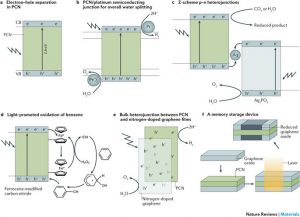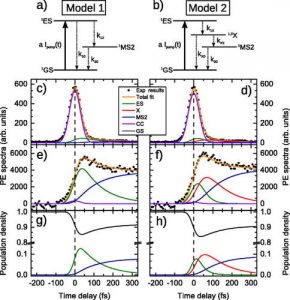
Angew. Chem. Int. Ed. 2019, 58, 9394
doi: 10.1002/anie.201902314
Press release
Dr. Yu Noda, Dr. Christoph Merschjann, Dr. Ján Tarábek, Dr. Patrick Amsalem, Prof. Dr. Norbert Koch, Dr. Michael J. Bojdys
Triazine‐based graphitic carbon nitride (TGCN) is the most recent addition to the family of graphene‐type, two‐dimensional, and metal‐free materials. Although hailed as a promising low‐band‐gap semiconductor for electronic applications, so far, only its structure and optical properties have been known. Here, we combine direction‐dependent electrical measurements and time‐resolved optical spectroscopy to determine the macroscopic conductivity and microscopic charge‐carrier mobilities in this layered material “beyond graphene”. Electrical conductivity along the basal plane of TGCN is 65 times lower than through the stacked layers, as opposed to graphite. Furthermore, we develop a model for this charge‐transport behavior based on observed carrier dynamics and random‐walk simulations. Our combined methods provide a path towards intrinsic charge transport in a direction‐dependent layered semiconductor for applications in field‐effect transistors (FETs) and sensors.


